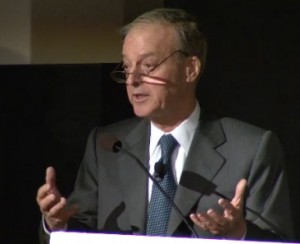Birth of ATMs: John Reed Describes a Banking Industry Transformation
-
-
slice.mit.edu
- 1
Filed Under
Recommended

During his career as head of Citigroup and then the New York Stock Exchange, Reed was a pioneer in fields including introducing computing into the banking industry. After he earned his MIT degrees at the Sloan school, he went to work for Citibank starting as a trainee. In 1967, the bank commissioned a report on the future of the industry. One finding raised the question of what impact computers might have on banking. The Citibank president gave Reed the findings and said, "You went to MIT, surely you understand computers…Read this and take some time and figure out what this means for the banking industry."
Reed, who had only written a few lines of Fortran during his MIT studies, took a year to study the problem, returned to MIT to study with several faculty members, and visited equipment manufacturers who were developing computers. And he decided that online, interactive systems would have the most influence on banking, akin to the airline reservations systems then being developed. Reed launched a company, Citibank Systems Inc., on the edge of the MIT campus, since he thought he could hire good people there. "It was a very unusual project because we had a solution looking for a problem," Reed noted.
Moving money online was an early successful application, and it still earns millions of dollars for banks every year. On the retail side, Reed's startup looked at branches and how to replace cash registers with speedier equipment. The developments allow Citibank's to take the lead in issuing credit cards that allowed customers to transact business without carrying cash.
For Automated Teller Machine (ATMs), the main proposition was this: "We decided that the electronic dispensing of cash was going to be a real change agent," he said. In 1970, Citibank had 1,600,000 customers in New York City so that became the test site. Reed moved his operation to California to combine his startup team with a group of engineers who had just developed a related system. They designed computers and multiplexers and leased telephone lines from AT&T. And then they had to figure out how human beings were going to interact with the machines….and that was just the beginning.
Learn more about the ATM revolution in John Reed's talk starting at 20:50, after the ESD award ceremonies.







Comments
Jeff G
Tue, 05/14/2013 7:32pm
The type of reinvention described by John Reed needs to be applied to the banking industry of today. With 60%* of consumers now showing preference for online or mobile banking over branch banking, there is an opportunity to reinvent an industry that hasn't introduced much in the way of innovation since the ATM.
* PwC on <a>Branch Strategy</a>